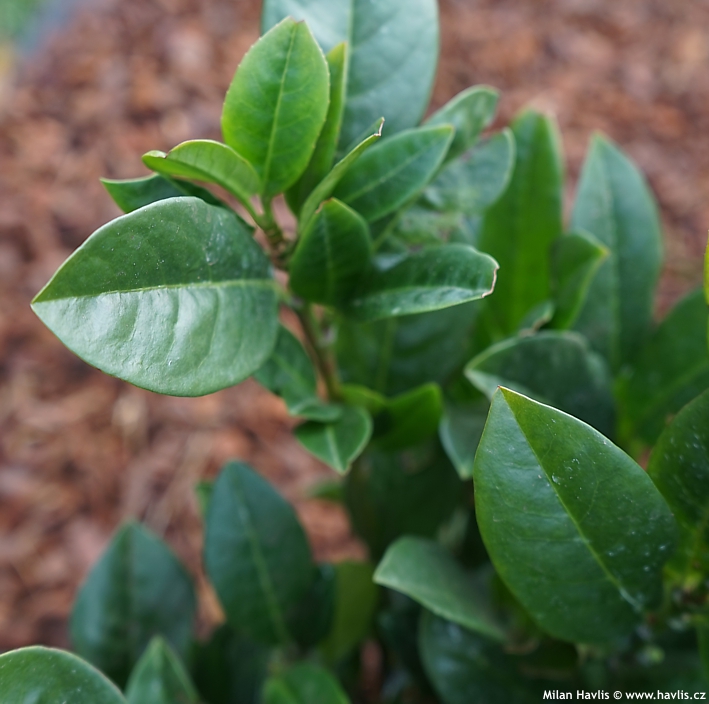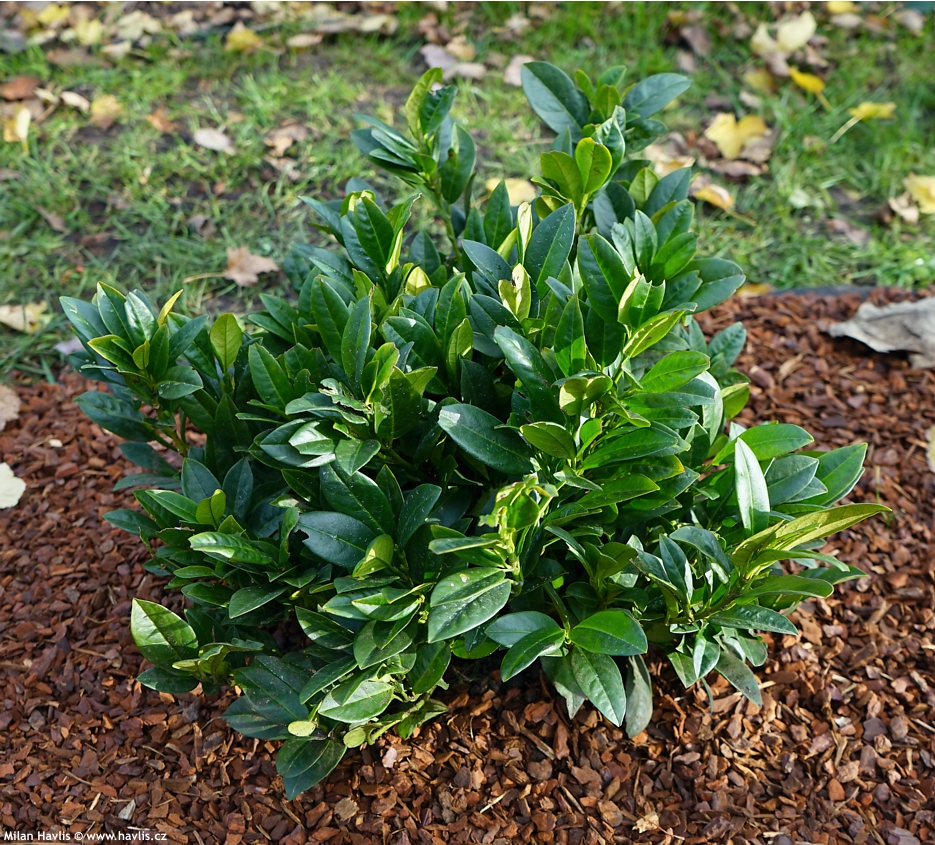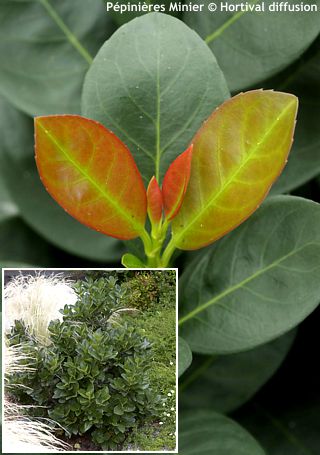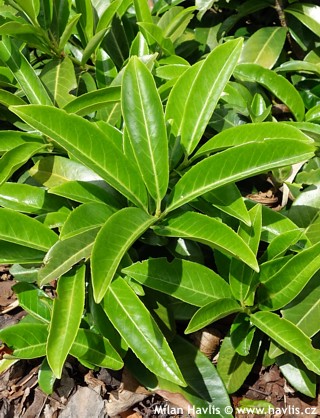Prunus laurocerasus 'PIRI' Cherry laurel, common laurel, English laurel
size/type
small shrub,small shrub
usual height
0,3-0,8m
usual width
0,5-1m
leaves
evergreen broadleaf
colour of leaves
flowers
less showy but noticeable
colour of flowers
blooming time
April-May
location
full sun to shade
soil type
acidic (peaty) to neutral
soil moisture requirements
evenly moist (dislikes drought)
USDA zone (lowest)
5b (down to -27°C)
winter protection
for zone 5+6

for zone 7

categorized
Prunus
We are specialists in evergreen plants and offer the widest possible range of quality plants. English (cherry) laurel is probably the most common and reliable species. There are many varieties from all around the world, though, the most suitable and hardiest come from local or near-local breeders. Dr. Jozsa Miklos is a Hungarian breeder who spent a lot of time breeding beautiful and hardy cherry laurels and we are happy to be able to have trialled them here in Czechia, and now we introduce them one by one to our customers, too.Description of the plant:
Piri is a dwarf cherry laurel variety of dense and almost rounded habit. Its evergreen leaves are leathery, broadly elliptic to ovate, dark green, and glossy. The plant grows slowly, only some 5-10 cm per year, and is suitable for small beds as well as containers. In April or May appear compound inflorescences made of small, white, fragrant flowers. They are followed by black berries which, as recent studies confirmed, are not poisonous. Only seeds from unripe fruit if properly chewed may cause discomfort since they contain the same toxin as bitter almonds (source: Plants For A Future - www.pfaf.org). If you want to prune it, do so in mid spring before new leaves emerge or in mid summer. Laurels need slightly deep and fertile, acidic, moist soil, and extra watering in frost-free periods in winter to prevent from drying out before the ground gets frozen. It will thrive in full sun or part shade and will also tolerate being grown in full shade. It seldom suffers from chlorosis (leaves turning yellow owing to lack of iron in the soil) but when it does use a special liquid soil pH balancer to keep it acidic which will help the plant absorb iron. It is hardy to at least -27 °C (USDA zone 5b) without any injury and suitable for outdoor pots.
Last update 27-12-2020
QUICK PRICE OVERVIEW
CURRENTLY SOLD OUT
WANT TO TRY A SIMILAR PLANT?



















